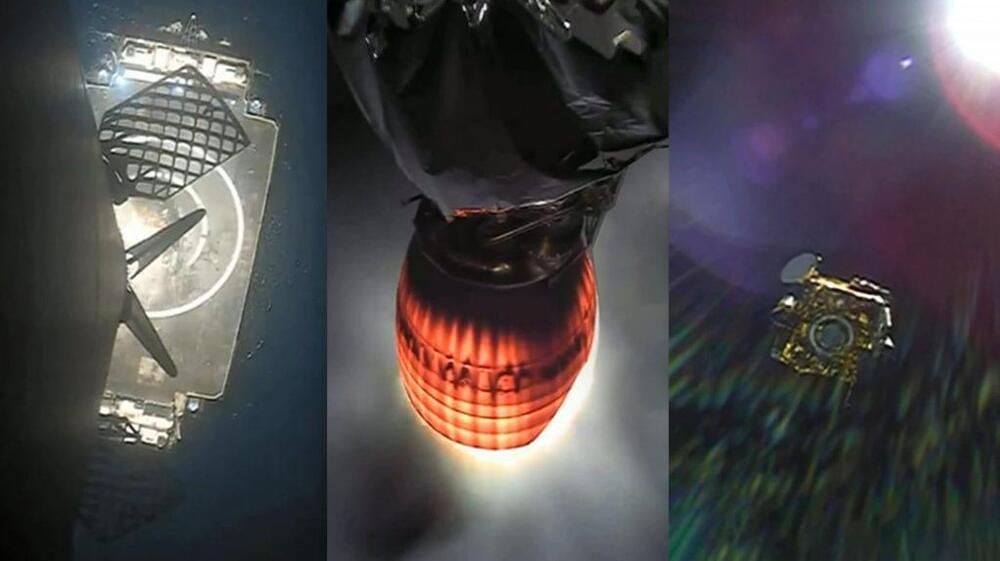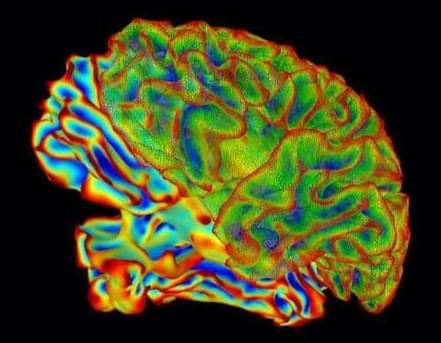There are lots of potential uses for a Mars colony. While drinking water is a big one, just as important is creating rocket fuel out of hydrogen.
Get the latest international news and world events from around the world.

256-qubit Quantum Computer Unveiled
The first 256-qubit quantum computer has been announced by startup company QuEra, founded by MIT and Harvard scientists.
QuEra Computing Inc. – a new Boston, Massachusetts-based company – has emerged from stealth mode with $17 million in funding and has completed the assembly of a 256-qubit device. Its funders include Japanese e-commerce giant Rakuten, Day One Ventures, Frontiers Capital, and the leading tech investors Serguei Beloussov and Paul Maritz. The company recently received a DARPA award, and has already generated $11 million in revenue.
QuEra Computing recently achieved ground-breaking research on neutral atoms, developed at Harvard University and the Massachusetts Institute of Technology, which is being used as the basis for a highly scalable, programmable quantum computer solution. The QuEra team is aiming to build the world’s most powerful quantum computers to take on computational tasks that are currently deemed impossibly hard.
A new artificial material mimics quantum-entangled rare earth compounds
Physicists have created a new ultra-thin, two-layer material with quantum properties that normally require rare earth compounds. This material, which is relatively easy to make and does not contain rare earth metals, could provide a new platform for quantum computing and advance research into unconventional superconductivity and quantum criticality.
The researchers showed that by starting from seemingly common materials, a radically new quantum state of matter can appear. The discovery emerged from their efforts to create a quantum spin liquid which they could use to investigate emergent quantum phenomena such as gauge theory. This involves fabricating a single layer of atomically thin tantalum disulphide, but the process also creates islands that consist of two layers.
When the team examined these islands, they found that interactions between the two layers induced a phenomenon known as the Kondo effect, leading to a macroscopically entangled state of matter producing a heavy-fermion system.

It’s a Bus. It’s a Train. It’s Both!
Circa 2008
What do you get when you cross a bus with a train? A dual-mode vehicle that has the versatility of a bus, the speed of light rail and fuel economy vastly better than either. Toyota and its truck-making subsidiary Hino Motors have signed on with Japan Rail Hokkaido to develop the vehicles, which carry 25 […].

SpaceX Falcon 9 rocket aces first interplanetary launch
SpaceX has aced its first operational interplanetary launch, sending NASA’s Double Asteroid Redirection Test (DART) spacecraft on its way out of the Earth-Moon system as part of the world’s first planetary defense mission.
Right on time, SpaceX’s flight-proven Falcon 9 booster lifted off at 10:21 pm PST with an expendable upper stage, new fairing, and the ~630 kg (~1400 lb) DART spacecraft in tow, reaching a nominal low Earth parking orbit about eight minutes later. A few seconds after the second stage’s first engine cutoff (SECO-1), booster B1063 safely landed on drone ship Of Course I Still Love You (OCISLY), wrapping up its third orbital-class launch and spaceflight in twelve months.
Around 28 minutes after liftoff, Falcon 9’s orbital second stage fired up for the second and final time. In just 53 seconds, Falcon 9’s upper stage accelerated from a stable velocity (relative to Earth’s surface) of 7.5 kilometers per second (4.7 mi/s) to almost 11.1 km/s (6.9 mi/s), sending DART (and itself) from low Earth orbit (LEO) to an Earth escape trajectory that will ultimately leave them in orbit around the sun.
Elon Musk Explains On Twitter Why The Cybertruck Has Been Delayed So Much
Tesla CEO Elon Musk came out some days ago to try to make a few things clear. He gave an explanation to why the Cybertruck has been postponed so many times, especially why it’s so difficult to produce new cars. In the list of Teslas postponed new vehicles is the Cybertruck, and Tesla s, and we could also include the tesla roadster which has also been postponed so many times seeing as it’s going to be coming with a completely new design from its predecessor. Let’s get into More detail on Elons reason for postponing the launch of these vehicles so much.
Hi, welcome to Everything cybertruck, where you’ll be getting all the latest updates on the announced Tesla Cybertruck. If you enjoy this video, let us know in the comments section below and why not support us by hitting that like and subscribe button, and don’t forget to hit the bell icon as well so you’ll be the first to know each time we release a new video. It’s free.

Refinery that supplies most gas used in B.C.‘s Lower Mainland halting work
Parkland Corp. is moving to pause its refinery processing operations in Burnaby, B.C., due to a lack of crude oil supply from the Trans Mountain pipeline, which has been shut down as a precaution due to the flooding in B.C.
The company says it plans to maintain the refinery, which is a key source of gasoline for the Vancouver area, on standby mode so that it can resume processing quickly.
“We are maintaining the refinery in ready-mode…which positions us to recommence processing once sufficient crude oil feedstocks become available”, Ryan Krogmeier, Parkland’s senior vice-president of refining, said in a statement.

How AI Is Deepening Our Understanding of the Brain
Artificial neural networks are famously inspired by their biological counterparts. Yet compared to human brains, these algorithms are highly simplified, even “cartoonish.”
Can they teach us anything about how the brain works?
For a panel at the Society for Neuroscience annual meeting this month, the answer is yes. Deep learning wasn’t meant to model the brain. In fact, it contains elements that are biologically improbable, if not utterly impossible. But that’s not the point, argues the panel. By studying how deep learning algorithms perform, we can distill high-level theories for the brain’s processes—inspirations to be further tested in the lab.


We might not know half of what’s in our cells, new AI technique reveals
Most human diseases can be traced to malfunctioning parts of a cell—a tumor is able to grow because a gene wasn’t accurately translated into a particular protein or a metabolic disease arises because mitochondria aren’t firing properly, for example. But to understand what parts of a cell can go wrong in a disease, scientists first need to have a complete list of parts.
By combining microscopy, biochemistry techniques and artificial intelligence, researchers at University of California San Diego School of Medicine and collaborators have taken what they think may turn out to be a significant leap forward in the understanding of human cells.
The technique, known as Multi-Scale Integrated Cell (MuSIC), is described November 24, 2021 in Nature.